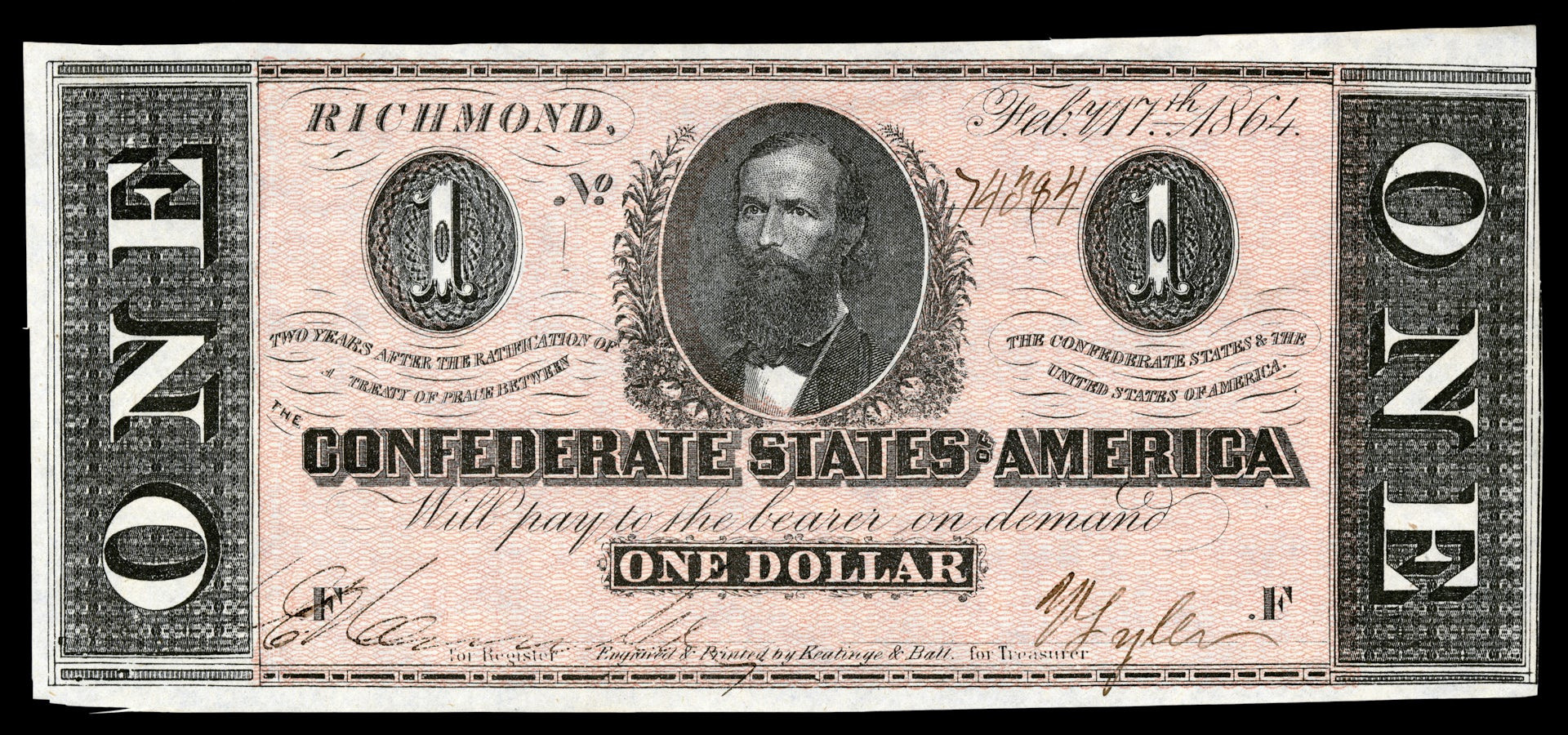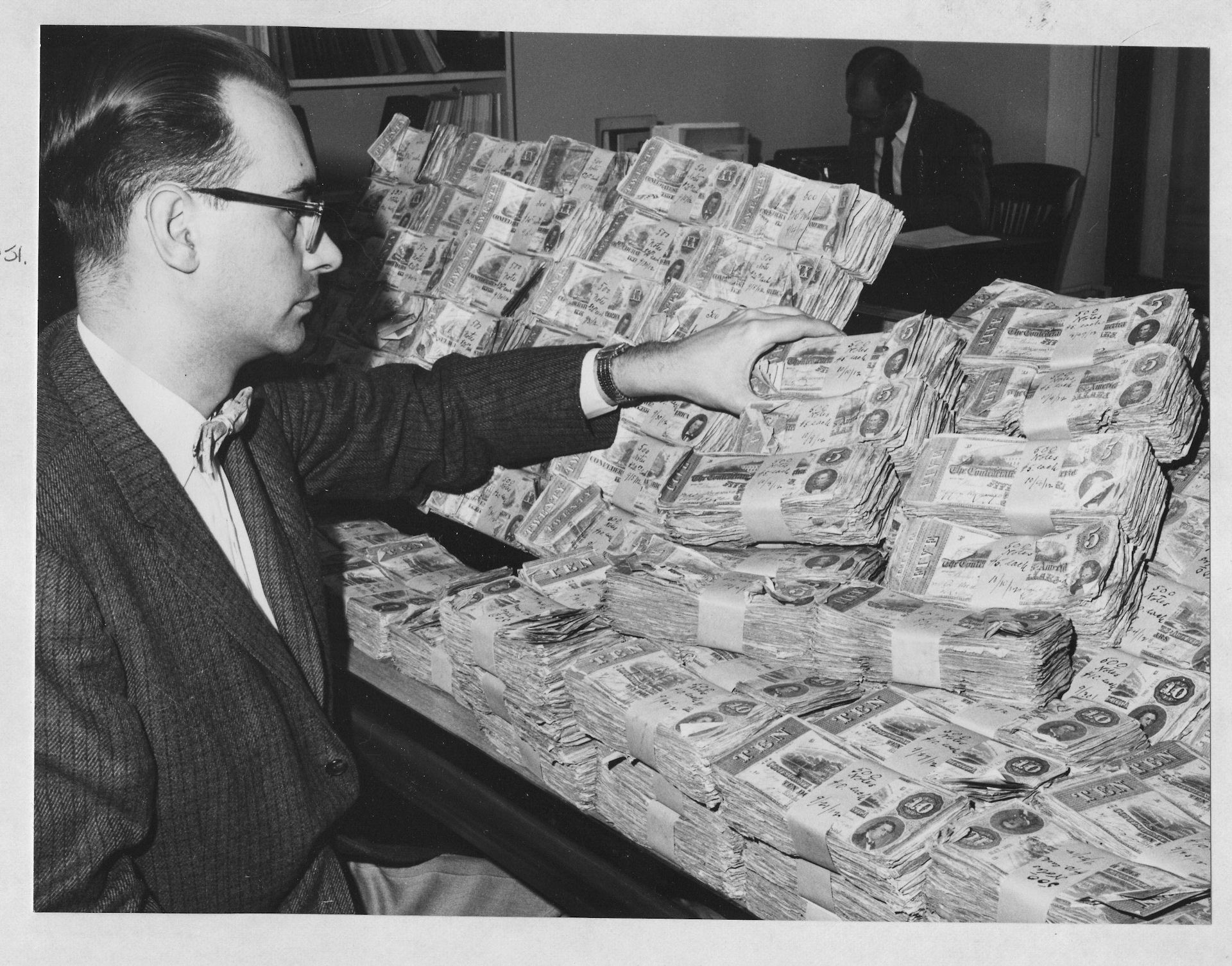The echoes of the American Civil War still resonate in many aspects of American society, and even in its financial history. One intriguing relic from this era is Confederate Money. But what exactly was Confederate currency, and what became of it after the Confederacy’s defeat? As a currency expert at money-central.com, we delve into the fascinating story of Confederate money, also known as “graybacks,” exploring its origins, its dramatic fall, and its surprising modern-day value.
The Birth of Confederate Currency: Financing a Secession
When the Civil War erupted in 1861, the newly formed Confederate States of America faced a critical challenge: funding their rebellion. At the time, the U.S. federal government primarily dealt in coins and had not yet embraced paper money on a large scale. Necessity being the mother of invention, the Confederacy boldly turned to paper currency as a means to finance the war effort.
This Confederate money, however, wasn’t conventional currency in the modern sense. It was essentially a promissory note, a pledge from the Confederate government to pay the bearer a specific amount of gold or silver. These certificates explicitly stated this promise, often including phrases like “Six months after the ratification of a treaty of peace between the Confederate States and the United States, the Confederate States of America will pay…”. Later issues extended this payout promise to two years post-peace treaty. The critical caveat, of course, was “if the Confederacy won the war.”
 Confederate one-dollar note issued in Richmond, Virginia, 1864, featuring a vignette of slaves picking cotton.
Confederate one-dollar note issued in Richmond, Virginia, 1864, featuring a vignette of slaves picking cotton.
These notes quickly became known as “graybacks,” a nod to the gray uniforms worn by Confederate soldiers. The designs on Confederate currency were diverse, intended to legitimize the new nation and appeal to its citizens. They featured an eclectic mix of imagery, from classical figures like the goddess of Liberty to historical figures revered in the South, such as George Washington, Andrew Jackson, and Confederate President Jefferson Davis. Notably, some bills also depicted enslaved African Americans at work, alongside images of cotton and trains, reflecting the agrarian economy of the Confederacy.
However, the production quality of Confederate money was often lacking. The Confederacy struggled to secure skilled engravers who could create the intricate printing plates necessary for high-quality banknotes. This resulted in currency that was often粗糙 and less sophisticated compared to U.S. currency.
The Plummeting Value of Graybacks: Economic Hardship in the Confederacy
As the Civil War progressed and the tide began to turn against the Confederacy, the value of Confederate money began a steep decline. The promise to redeem graybacks for gold or silver became increasingly dubious as Confederate prospects dimmed. Adding to the problem was rampant inflation. Wartime scarcity of goods led to soaring prices for essential items like food and clothing.
 A man examines stacks of Confederate currency notes, highlighting the hyperinflation and abundance of near-worthless money.
A man examines stacks of Confederate currency notes, highlighting the hyperinflation and abundance of near-worthless money.
By late 1864, just months before the Confederacy’s collapse, one Confederate dollar was worth a mere three cents in U.S. currency. This drastic devaluation underscored the failing faith in the Confederate cause and the rapidly deteriorating economic situation within the Confederacy.
When the Confederate army surrendered in April 1865, Confederate money effectively became worthless. With the Confederacy dissolved, the promissory notes were no longer backed by any government or any realistic prospect of redemption. Graybacks were deemed useless as legal tender, representing a financial catastrophe for those who held them.
From Worthless Paper to Valuable Collectibles: The Modern Fate of Confederate Money
While Confederate money became economically defunct after the Civil War, it did not disappear into oblivion. Instead, it transitioned into the realm of collectibles. Just as Civil War artifacts like uniforms and weapons hold historical and collectible value, so too does Confederate currency.
Today, Confederate money is a sought-after item among numismatists and history enthusiasts. The value of individual Confederate bills varies widely depending on factors like denomination, series, condition, and rarity. Remarkably, some rare Confederate banknotes are now worth many times their original face value, even exceeding ten times their 1861 equivalent in some cases.
This transformation from worthless paper to valuable collectibles highlights the fascinating journey of Confederate money. It serves as a tangible reminder of a pivotal period in American history, a testament to the financial struggles of the Confederacy, and an intriguing example of how objects associated with historical events can acquire value far beyond their original monetary purpose. For those interested in financial history or Civil War memorabilia, Confederate money offers a unique and compelling area of study and collection.